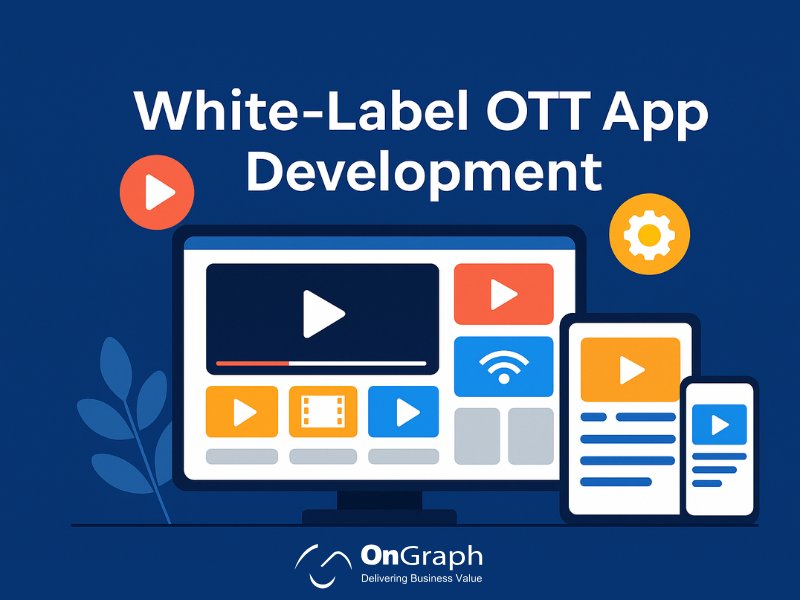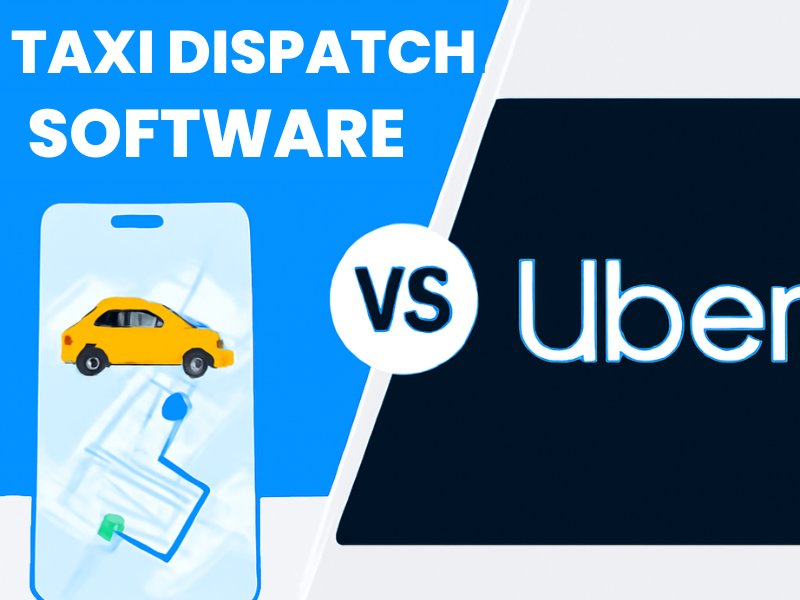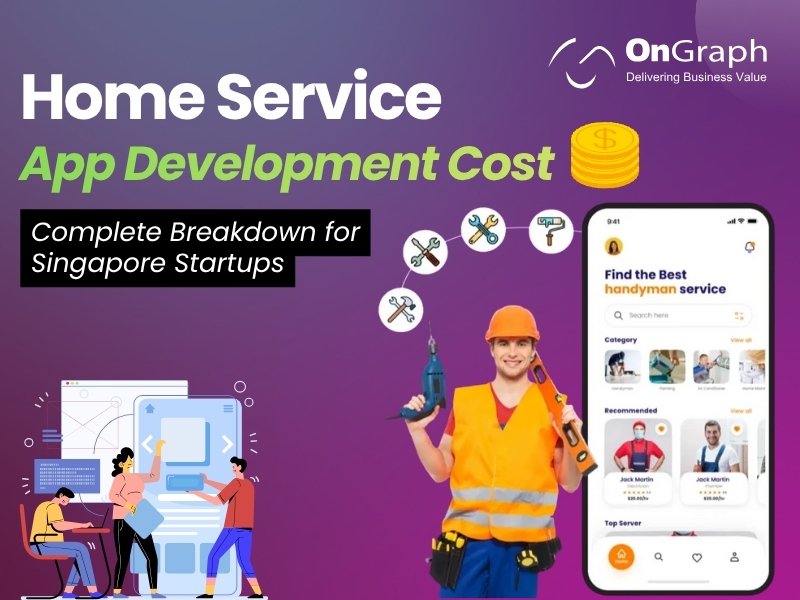In this article
- Why Choose White-Label OTT App Development?
- Defining a Strong White Label OTT Platform: What to Look For
- Understanding OTT App Development Cost
- Step-by-Step Roadmap for Your White‐Label OTT Launch
- Real-World Use Cases & Success Stories
- Common Pitfalls & How to Avoid Them
- Actionable Takeaways for Your Launch
- Summary
If you’re ready to build your own streaming business, then White-Label OTT App Development is the most efficient route.
By leveraging a ready-made platform you customise and brand, you skip many months of build time and reduce development risk.
With global OTT revenues projected at US$343 billion by 2025 and weekly usage averaging 17 hours per user, the timing is ideal.
In this guide, you’ll discover how to select the right OTT app development company, evaluate the white label OTT platform options, understand OTT App Development Cost, build your launch roadmap, and adopt best practices.
Throughout this article, I use the term White-Label OTT App Development at least seven times, so you’ll stay on-target for SEO and clarity.
Why Choose White-Label OTT App Development?
1- Explosive Market Opportunity
The global OTT streaming market is estimated at US $347.11 billion in 2025, and projected to reach around US $596.92 billion by 2030 at a CAGR of 11.45%. Other reports show revenues of about US $351 billion in 2025, with ARPU rising to approximately US $85.04.
This massive growth means there is strong room for new entrants via white label OTT solutions rather than being limited to just incumbents.
2- Time-to-Market & Economies of Scale
When you go with White-Label OTT App Development, you leverage a pre-built streaming backend, front-end apps, monetisation engine and often device compatibility across mobile, web and TV. That allows you to launch faster and much more cost-effectively than building from scratch.
In a comparison of DIY vs white label, the white label path is highlighted as “scalable, affordable, content-focused, and provides seamless integration.”
For businesses that want to avoid long R&D cycles, choosing the right OTT app development company offering white label is often the smarter play.
3- Branding & Ownership
With a solid white label OTT platform, you retain full brand control — your logo, UI/UX, app store identity — yet you outsource the heavy technical burden.
One vendor summary noted that a white label solution lets you “brand it your way, avoid revenue sharing and launch across devices.”
This gives you both agility and ownership — essential for serious growth tracking and monetisation.
4- Scalability, Multi-Device Reach & Monetisation Flexibility
Your viewers will consume content on smartphones, tablets, connected TVs, desktops, and more. According to Uscreen’s update, the OTT video market will reach 4.9 billion users by 2029, and the largest revenue chunk will come from ad-supported business models.
A good white label OTT platform will support multiple monetisation options (SVOD, AVOD, TVOD), device compatibility, and cloud/CDN scaling — making it uniquely positioned vs home-grown builds that often struggle to scale or monetise efficiently.
Launch Your Branded OTT Platform in Weeks
Defining a Strong White Label OTT Platform: What to Look For
When you evaluate white label OTT solution vendors (and the ott app development company that will implement them), you want to check several key modules carefully.
1- Device & Platform Coverage
Ensure the platform supports:
- Native iOS & Android apps (phones & tablets)
- Smart TV platforms (Android TV, Apple TV, Fire TV, Roku)
- Web player (desktop/laptop)
- Set-top box and streaming stick integration
The more device coverage, the wider your potential audience and the better your ROI.
2- Live + On-Demand Content Management
Your system should support both live channel streaming and video-on-demand (VOD). Uploading movies/series, metadata management, scheduling live channels, geo-blocking, transcripts/subtitles—all necessary. One vendor case shows live channels, admin dashboards, SEO, and user segmentation included.
This becomes critical if your content strategy includes live events or large libraries.
3- Monetisation & Business Model Flexibility
A best-in-class white label OTT platform will support:
- Subscription (SVOD)
- Advertiser-supported (AVOD)
- Pay-per-view / transactional (TVOD)
As one article shows: pay-per-view via a white label OTT platform can open new revenue streams.
Look for an integrated payment gateway, voucher/coupon support, regional tax/compliance support, ad insertion system, and analytics tied to revenue.
4- Analytics, User Insights & Engagement Tools
Metrics matter. You’ll want to track: user sign-ups, churn rate, average watch time, device breakdown, content drop-off, ad revenue per user, and ARPU. Analytics enable you to iterate and optimise.
One vendor claims custom metrics and a live dashboard deployed in its platform.
These dashboards provide actionable insights on content efficacy, user behaviour, and monetisation health.
5- Security, DRM & Performance
Protecting your content and brand is non-negotiable. At minimum, ensure:
- Multi-DRM support (e.g., Widevine, FairPlay)
- Tokenised URLs, geo-blocking, watermarking
- CDN for global delivery, adaptive bitrate streaming
- High availability (scaling, failover)
White label vendors often emphasise this, for instance, by stating “scalable & secure platform” in their marketing.
These are critical given the cost of downtime, piracy, and negative brand impact.
6- Infrastructure & Hosting Considerations
Your total cost isn’t just the app build—it’s the ongoing infrastructure cost: cloud hosting, CDN, streaming costs, transcoding, and schedules.
Before committing to an OTT app development company, clarify what is included: Do they manage DevOps? What server configuration? What does scaling look like when you have thousands or millions of users?
This brings us directly to the discussion of cost.
Understanding OTT App Development Cost
When planning for White-Label OTT App Development, you must carefully estimate cost across several dimensions.
1- Base Platform & Build Cost
For a standard white label build (mobile apps, web player, backend, CMS, monetisation) one article puts rough cost range at US $25,000-US $80,000.
If you add premium features (live streaming at scale, interactive features, 4K/UHD, custom UI) cost may escalate to US $40,000-US $150,000+.
2- Infrastructure & Operating Costs
Recurring costs:
- CDN & cloud streaming delivery: depending on monthly traffic.
- Server maintenance, DevOps support.
- Licensing/rights for content (if acquiring).
- App store fees, payment gateway charges.
3- Time & Opportunity Costs
If you build in-house from scratch, you’ll invest more time (months) and resources (engineering team) and have a higher risk. With white-label, you accelerate launch, capture revenue faster, and reduce opportunity cost.
4- ROI Considerations
Because the OTT market is large and growing (see section above), your investment may be justified if you:
- Target the right niche,
- Monetise properly,
- Scale efficiently.
For example: Global revenue is projected US $343 billion by 2025.
If your platform hits a modest share, the economics support a serious ROI.
5- Cost Breakdown Sample Table
| Item | Estimated Range | Notes |
| White label licence + implementation | US $25,000-US $80,000 | Basic build |
| App store & submission costs | US $500-US $2,000 | Depending region/devices |
| Monthly streaming infrastructure | US $1,000-US $15,000+ | Depends on traffic |
| Content acquisition/licensing | Varies widely | Key variable |
| Annual maintenance & updates | 10-20% of platform cost | Standard industry norm |
These numbers help you plan realistically and avoid surprises.
Step-by-Step Roadmap for Your White‐Label OTT Launch
Here’s how to execute White-Label OTT App Development successfully from concept to scale.
1: Define Your Audience, Niche & Content Strategy
- Choose a vertical (e.g., fitness, niche film, live events, education) rather than a broad general-entertainment service.
- Research competitor platforms, pricing models, and content gaps.
- Decide on content mix: live, VOD, mixed.
Example: A medium-sized organisation used a white label OTT platform to launch a pay-per-view live event (₹99 fee, 2,000 virtual attendees) via their own brand rather than a third-party platform.
2: Choose the Business Model & Monetisation
- SVOD (monthly/annual subscription)
- AVOD (free + ads)
- TVOD (pay-per-view/rental)
- Hybrid model
Choose based on your audience’s willingness to pay, content type and competitive landscape.
3: Select the Right OTT App Development Company & Platform
Use the checklist in section 2 to evaluate vendors. Ask for references, demo platforms, scalability proof, IaaS/CDN details, and cost breakdown.
4: Branding & Customisation
- Apply your brand colours, UI/UX, and iconography.
- Determine user onboarding flows, retention mechanics, and device experience uniformity.
- Configure backend: CMS, metadata fields, categories, pricing tiers, and user segmentation.
5: Content Preparation & Rights Management
- Upload your library, standardise metadata, add thumbnails, subtitles, trailers.
- Live channel integration: ingest streaming URLs or partner feeds.
- Set geo-blocking and device restrictions if needed.
A case study of a white label OTT solution shows the importance of these features for multiple industries.
6: Infrastructure Setup & Testing
- Deploy on cloud/CDN, ensure autoscaling, and high availability.
- Conduct placeholder tests: streaming performance, cross-device playback, and slow network scenarios.
- Security testing: DRM, user authentication, secure playback.
7: Launch & Marketing
- Submit apps to stores, prepare marketing plan, SEO optimisation, social media, and influencer tie-ups.
- Consider launch offers, early bird pricing, and referral programs.
- Use push notifications, email marketing to drive the initial audience.
8: Analytics, Feedback & Iteration
- Monitor analytics: which content performs, drop-off points, device breakdown, and ARPU.
- Use data to optimise: highlight top genres, reduce churn via targeted offers, improve UI flows.
- Introduce new features based on user feedback (e.g., watch-later lists, offline download, interactive live chat).
9: Scale & Expand
- Add new devices (e.g., smart TV, set-top boxes) as your user base grows.
- Expand to new regions with localisation, multi-language support, and local payment gateways.
- Explore new monetisation streams: licensing your platform, renting content to other services, live events (PPV).
10: Retain & Grow Your User Base
- Use gamification, loyalty programs, and community engagement.
- Refresh content regularly; live events create spikes in engagement.
- Offer bundle deals, tiered pricing, and family plans.
Real-World Use Cases & Success Stories
Case Study: Free Streaming Service Leverages White Label Technology
The streaming service “STIRR,” built on a white label OTT platform, improved its ability to deliver live + on-demand content across devices.
They were able to rapidly scale user experience, support many devices, and deliver consistent streaming quality.
Use Case: Live Event & Pay-Per-View Model
A small entertainment group in India used a white label OTT platform to host a live stand-up show on a pay-per-view basis. They charged ₹99 per viewer and reached over 2,000 attendees—opening a direct revenue channel with minimal overhead.
This demonstrates how a white label OTT solution can serve non-traditional content providers (events, education, fitness) effectively.
Market Insight: Surge in OTT Viewership & Device Penetration
In India, the OTT base reached 601 million users with 148 million paid subscriptions according to the 2025 Ormax report; connected TV users surged 87% year-on-year.
This points to an emerging opportunity: platforms that launch with multi-device support (especially TV) have a strong growth path.
Common Pitfalls & How to Avoid Them
- Underestimating infrastructure cost: Many launch platforms without factoring in CDN costs, global scale, or peak-traffic surges. Mitigate by choosing a vendor experienced in high-traffic builds and clarifying cost models upfront.
- Delayed time-to-market: If you build from scratch rather than going white label, you risk missing market windows. White-label speeds up deployment.
- Weak monetisation strategy: Without a clear monetisation model (SVOD, TVOD, AVOD), the launch may stall. Define the model early and ensure your white label platform supports it.
- Poor device support: Users expect streaming on mobile, web, and TV. If your OTT app development company delivers only mobile, you lose a large segment. Check device coverage.
- Neglecting analytics and iteration: If you don’t track data and optimise, your content strategy will stagnate. Use built-in analytics and act on them.
- Ignoring branding and UX: Launching with a generic UI dilutes brand value. Use the white label platform’s customisation options to deliver a strong brand experience.
Actionable Takeaways for Your Launch
- Choose a niche or vertical to start with, rather than competing head-on with large incumbents.
- Select an ott app development company that offers clear cost breakdowns, references, and device coverage.
- Negotiate the white label OTT platform licence, customisation scope, and ongoing maintenance fees.
- Build your launch roadmap: content upload → branding → dev testing → soft launch → full public launch.
- Set key metrics (e.g., monthly users, ARPU, churn rate) and review them monthly with your analytics dashboard.
- Plan for scale from day one: global audience, multiple screens, peak loads.
- Keep monetisation flexible: start with one model and add another (e.g., start SVOD, then add AVOD).
- Refresh your content library regularly and promote live events to boost engagement and reduce churn.
Summary
In summary, White-Label OTT App Development offers a compelling, cost-effective, time-efficient path into the booming streaming market.
By working with the right OTT app development company, selecting the best white label OTT platform, understanding your OTT App Development Cost, and following a clear roadmap, you give your brand the best chance to succeed.
With the global OTT market expanding rapidly, mobile and TV device usage increasing, and monetisation models evolving, the time is ripe. Launch smart, launch fast, and iterate aggressively.
FAQs
White-label OTT app development means partnering with an existing streaming technology provider (a white label OTT platform) to customise and brand the platform as your own. You skip building core infrastructure from scratch and can focus on content, brand, and growth.
Typical cost for a white-label base platform (mobile + web + CMS) ranges from US $25,000 to US $80,000 depending on features. Premium builds with live event support, multi-screen, custom UI may cost US $40,000-US $150,000+. Recurring infrastructure costs add further.
Check for: proven track record in white label OTT solutions, device coverage, monetisation options, analytics, customisation flexibility, transparent cost model and maintenance/support. Analyse demo platforms and client references.
Most platforms support:
- SVOD (subscriptions)
- AVOD (ad-supported)
- TVOD (pay-per-view/rental)
- Hybrid models (e.g., freemium + ads + subscription).
Selecting the right mix depends on your audience and content.
Must-haves include:
- Multi-device compatibility (mobile, web, smart TV)
- Live streaming plus VOD content management
- Secure streaming (DRM, watermarking)
- Analytics & user insights dashboard
- Monetisation tools (subscriptions, ads)
- Scalability via cloud/CDN
Applying a checklist ensures you select the best white label OTT platform.
Yes. With a white-label OTT solution you don’t develop from scratch; many vendors promise go-live within weeks/months. The exact time depends on content readiness, customisations and device submission timelines.
Focus on: multi-device support, fresh content, live events (which drive spikes), data-driven recommendations, push notifications, loyalty programmes, and flexible monetisation. Use analytics to track performance and optimise continuously.
About the Author
Let’s Create Something Great Together!
Latest Blog















